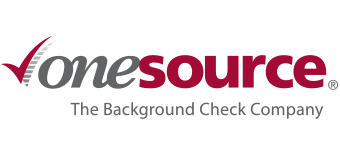3 Background Check Budgeting Tips
Every organization’s budget is as unique and specialized as the organization itself. When determining the budget allotment for screening services, financial teams must consider the potential volume of screenings they will conduct and the specific checks they will require. Different industries have a wide variety of hiring and turnover expectations, and all of this must be accounted for in a background check budget.
When these expectations are measured and fine-tuned to each organization, they help maximize background checks while staying within financial margins. Even organizations that do not typically set aside funds for screenings should make a habit of budgeting for compliant background checks. The cost of making an uninformed hiring choice always exceeds the cost of screening an excellent hiring choice.
Here are 3 background check budgeting tips so an organization can keep security and informed hiring in mind while budgeting.
Tailor screenings to job descriptions
No matter how much room you have in your budget for hiring and recruitment, your HR department can keep background check costs low by carefully choosing what job titles require certain screenings. Some positions may not need screening beyond a basic background check, and others may need more in-depth checks based on the duties of the job.
For example, you could run a standard background check on every applicant but only perform driving record checks on applicants you are certain will drive for work. By performing an audit of your available positions and deciding the amount of screening each job needs, you can save money and only order specialized checks when they’re absolutely necessary.
Understand your industry’s workforce turnover
Hiring new team members can be exciting, but it includes extra—sometimes unexpected—costs. You have to consider the time and money it takes to recruit, hire, train. and screen applicants. By knowing the average turnover of your industry, you can better predict your hiring costs and avoid unforeseen expenses.
Some workforces can turn over more than 20 percent of their team each year, especially in times of growth. Base your turnover expectations on your previous year, then proactively set your screening budget to accommodate growth. As the year unfolds, keep track of your real turnover rate to make more accurate predictions for the next year. If you land on a relatively accurate estimate of your hiring costs, you can make better use of your background check provider’s services.
Manage your risks
The best thing your organization can do is save money, minimize risk and build a constructive culture. Background checks will help you make hiring choices that best align with your organization’s mission and values. When you budget for screening services, your investment is returned through a reliable, trustworthy workforce..
By properly screening each of your applicants, you’ll avoid the cost of negligent hiring and Fair Credit Reporting Act (FCRA) noncompliance lawsuits. If you would like to learn more about how background checks can fit into your organization’s budget, contact the One Source Client Relations Team.
